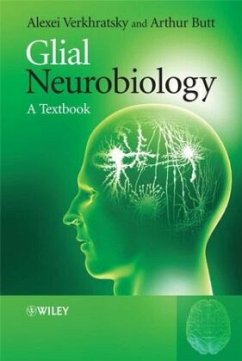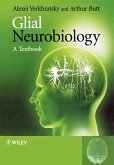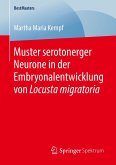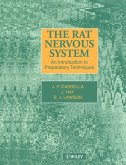Glial cells are the most numerous cells in the human brain but for many years have attracted little scientific attention. Neurophysiologists concentrated their research efforts instead on neurones and neuronal networks, because it was thought that they were the key elements responsible for higher brain function. Recent advances, however, indicate this isn't exactly the case. Not only are astroglial cells the stem elements from which neurones are born, but they also control the development, functional activity and death of neuronal circuits. These ground-breaking developments have revolutionized our understanding of the human brain and the complex interrelationship of glial and neuronal networks in health and disease.
Features of this book:
_ an accessible introduction to glial neurobiology including an overview of glial cell function and its active role in neural processes, brain fusion and nervous system pathology
_ an exploration of all the major types of glial cells including: the astrocytes, oligodendrocytes and microglia of the CNS and Schwann cells of the peripheral nervous system; the book also presents a broad overview of glial receptors and ion channels
_ an investigation into the role of glial cells in various types of brain diseases including stroke, neurodegenerative diseases such as Alzheimer's, Parkinson's and Alexander's disease, brain oedema, multiple sclerosis and many more
_ a wealth of illustrations, including unique images from the authors' own libraries of image,s describing the main features of glial cells
Written by two leading experts in the field, Glial Neurobiology provides a concise, authoritative introduction to glial physiology and pathology for undergraduate/postgraduate neuroscience, biomedical, medical, pharmacy, pharmacology,k and neurology, neurosurgery and physiology students. It will also appeal to researchers in neuroscience, physiology, pharmacology and pharmaceutics.
Hinweis: Dieser Artikel kann nur an eine deutsche Lieferadresse ausgeliefert werden.
Features of this book:
_ an accessible introduction to glial neurobiology including an overview of glial cell function and its active role in neural processes, brain fusion and nervous system pathology
_ an exploration of all the major types of glial cells including: the astrocytes, oligodendrocytes and microglia of the CNS and Schwann cells of the peripheral nervous system; the book also presents a broad overview of glial receptors and ion channels
_ an investigation into the role of glial cells in various types of brain diseases including stroke, neurodegenerative diseases such as Alzheimer's, Parkinson's and Alexander's disease, brain oedema, multiple sclerosis and many more
_ a wealth of illustrations, including unique images from the authors' own libraries of image,s describing the main features of glial cells
Written by two leading experts in the field, Glial Neurobiology provides a concise, authoritative introduction to glial physiology and pathology for undergraduate/postgraduate neuroscience, biomedical, medical, pharmacy, pharmacology,k and neurology, neurosurgery and physiology students. It will also appeal to researchers in neuroscience, physiology, pharmacology and pharmaceutics.
Hinweis: Dieser Artikel kann nur an eine deutsche Lieferadresse ausgeliefert werden.








